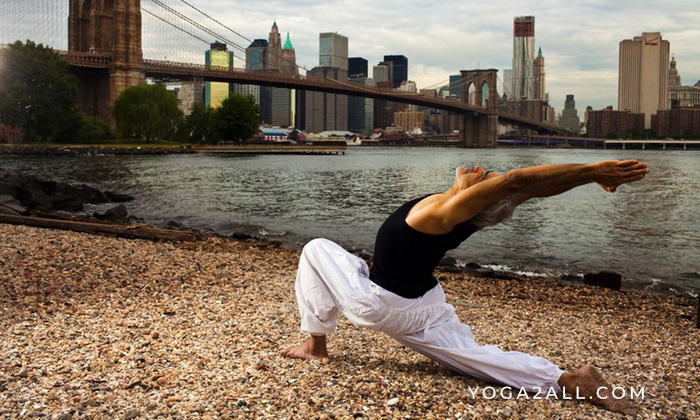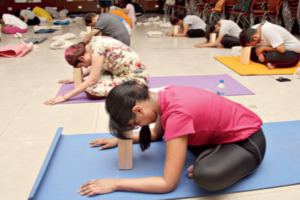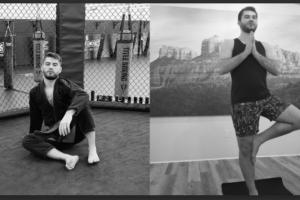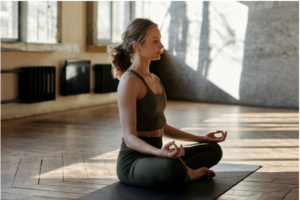
People around the world are discovering the physical, emotional and spiritual benefits of many forms of yoga, but some practitioners find themselves craving a deeper practice. By looking for a more authentic practice, they often find themselves wanting to know more about Dharma Yoga and the effects it can have on their lives.
Here are 10 things that you should know about Dharma Yoga, and how you can incorporate this life-changing practice into your life.
- Dharma Yoga combines many schools of yoga – Dharma Yoga can trace its roots to nine different forms of yoga. These include Hatha (will or force), Raja (self-discipline), Karma (kindness), Kriya (practice), Bhakti (devotion to ‘god’), Japa (mantra recitation), Laya (the awakening of kundalini energy) and Jnana (wisdom or knowing). It also focuses on Patanjali’s eight limbs of yoga. It is a type of classical Hatha-Raja Yoga.
- It emphasizes good health and a clear mind – Sounds good, doesn’t it? Absolutely! Dharma Yoga is a practice that works to promote spiritual awakening, promote good health, and develop a clear mind, and emphasize a kind heart. Not only will these traits make your yoga practice stronger, they will improve all aspects of your life. Ideally, this is what yoga is meant to do – integrate seamlessly with all areas of your daily experiences.
- The 1920 book ‘Autobiography of a Yogi’ still sells countless copies –Dharma Yoga was first brought to the attention of many international readers through Paramahansa Yogananda’s 1946 book Autobiography of a Yogi. Some readers have described reading this book as such: “Imagine Christ, Buddha, or Krishna telling their life story in their own words. That’s what you get when you read Yogananda’s Autobiography of a Yogi.”
- Dharma Yoga is based on love – The practice of Dharma Yoga is based on the concept of Ahimsa. That is a Sanskrit word that translates to non-violence or love for all living beings. Some yoga practitioners choose to become vegetarian or vegan, but even if this is not possible for you, you can always take small steps to reduce the suffering you inflict on other living beings.
- There is no one right way to do Dharma Yoga – It is always important to remember that each student will advance on their own unique path, and always at their own pace. The ultimate goal is not physical fitness or getting flexible (as some people will claim about other forms of yoga); rather, it is about developing and cultivating self-compassion.
- Dharma Yoga can be complemented by Kriya Yoga – While many yogis and yoginis know all about Patanjali’s eight-limbed path, they might not be aware of the three practices of Kriya Yoga, his further teachings. These are:
- Tapas (self-discipline and self-care)
- Svadhyaya (self-study and introspection)
7. Ishvarapranidhana (devotion to the “Lord” or a higher power)The practice of daily karma compliments Dharma Yoga– The word ‘karma’ gets thrown around a lot in Western culture, but few people realize exactly what it means. In the yoga tradition, karma refers to selfless sacrifice and choosing to do what is best for every living being in your life.
8. The practice is not just ‘on the mat’ – While some people might say that they are ‘taking some days off from their practice,’ they usually mean that they are taking time away from the mat or the studio. With a Dharma Yoga practice, this is impossible – you are practicing your yoga 24/7. Sometimes this means getting on the mat every day, other times it might mean practicing meditation and mindfulness, and others it might mean simply practicing kindness to both yourself and others.
9. Meditation is key – One of the most important aspects of Dharma Yoga is taking the time to calm the ‘crazy monkey mind’ and simply watching one’s breath. By meditating and practicing mindfulness on a daily basis, you can create a space for kindness, introspection, self-discipline, and wisdom – all of the aspects of Dharma Yoga described in point 1!
10. Some of the most influential teachers are in the West – Sri Dharma Mittra is considered one of the leading voices in Dharma Yoga. Born in Brazil in 1939, he now teaches and lives in New York at his world-renowned Dharma Yoga Center New York.
Similarly, Ellen Grace O’ Brian is one of the most recognized teachers of Kriya Yoga today. She is often referred to as Yogacharya O’Brian, and she is a minister, teacher, and author who has been studying and teaching Kriya Yoga for more than 30 years.
No matter what style of yoga you choose to practice, it is always important to keep an open mind, keep learning, and keep developing a routine that works for you.








